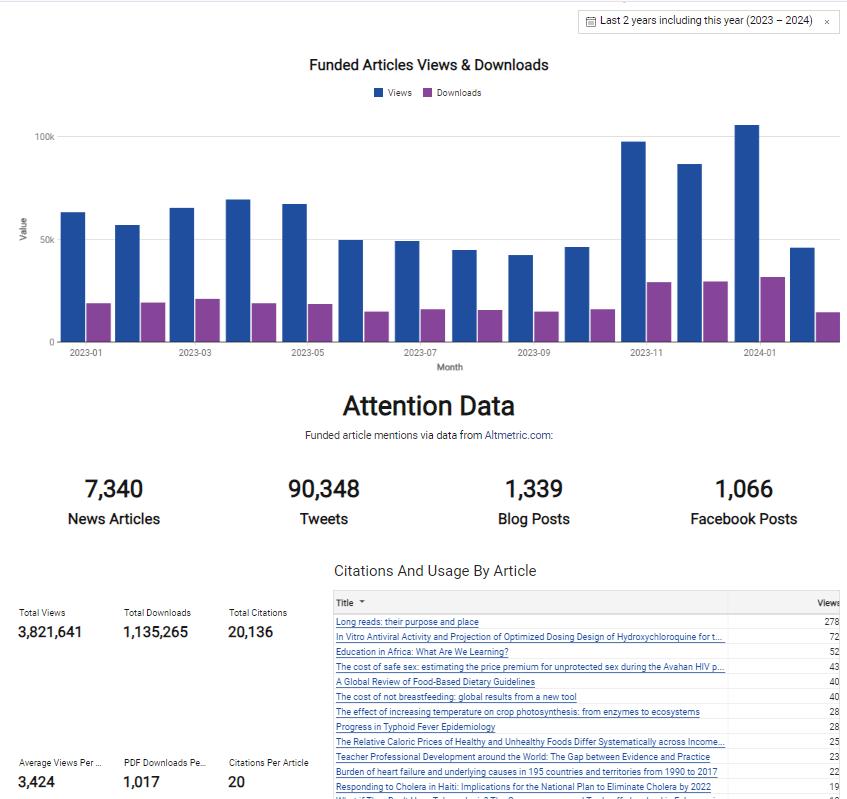What is Sensus Impact?
Silverchair and OUP developed Sensus Impact to help solve a growing problem for many publishers: the need to build connections with funders and demonstrate the value of the publishing process. This need is driven by increased pressure on the OA model, as well as other market factors.With Sensus Impact, we’re seeking to answer two key questions:
- Does publishing deliver value to funded research?
- And if it does, how can we measure that value?
Additionally, the data publishers and funders need to quantify value is fragmented. Bits and pieces of important data lie scattered across the research and publishing ecosystem, and it’s tough to get the systems that hold that data to speak the same language, let alone talk to one another.
Ultimately, funders need better tools to understand the impact of their investments.
Sensus Impact offers a solution for this conundrum. It is a central platform designed to visualize the value of funded research with interactive dashboards that consolidate usage, citation, and attention metrics.
How Sensus Impact came to be
Sensus began with a conversation between Silverchair and long-time client OUP. We talked about this gap in the market and forecasted that this challenge would only become more critical as the funding landscape evolves.The Silverchair team collaborated with OUP to create a list of needs for the first version of Sensus Impact, focusing on the biggest gaps in the funder reporting landscape. It was critical that this product also meet the needs of the wider publishing community, so we also launched a Community of Practice, a group of more than thirty publishers and industry leaders, to hear their input, solicit feedback on the initial iteration of the product, and to help chart the course for Sensus’ development.
What Sensus Impact does
Sensus Impact is a series of eighteen (and counting) unique funder dashboards, consolidating data for usage, citations, and altmetrics (with more data sources to come as we grow).Sensus provides multiple distinct search capabilities to ensure the site’s usability. Users can search and filter based on funder or grant/award ID. Users can also target specific date ranges, as the time between funding and publication can be lengthy. We also made sure that it’s easy to navigate between the search function and the funder dashboards themselves.
The dashboards are powered by Hum, with aggregate views of multiple data sources in one screen. From the dashboards, users can drill down into article-specific views to examine the impact of an individual article more closely. Attention metrics measure the social impact of funded research, adding another layer of data to help funders see the tangible value of their investments.
Bringing these metrics together offers a unique way to standardize the way we define value and measure impact, while simultaneously creating space for a diverse and comprehensive definition of what it means to bring value to research. In this way, we can make sure that impact isn’t lost in translation.
What’s next for Sensus Impact
Step one is to continue to build our community and listen to their needs. If you’re reading this and think you might be interested in joining our Community of Practice, please get in touch! We want to diversify this group, to build more connections between funders and publishers on how to extend the reach of funded research. We feel that the more voices we have guiding this product, the better Sensus Impact can serve the people and groups who need this data.We’re also developing a product roadmap to build out the dashboards with more metrics, adding greater value to these funder hubs.
Sensus Impact will increase in value as we continue to add content to the site. You do not need to be a Silverchair publishing partner to have content on Sensus Impact! Click here if you are interested in including your content on the site, or if you’re a funder and you’re interested in adding a dedicated dashboard for your organization. onto the site, or if you’re a funder and you’re interested in adding a dedicated dashboard for your organization.
If you haven’t explored the Sensus Impact dashboards yet, be sure to check them out here. You can also sign up for our mailing list to ensure you’re in the know as the platform evolves.
